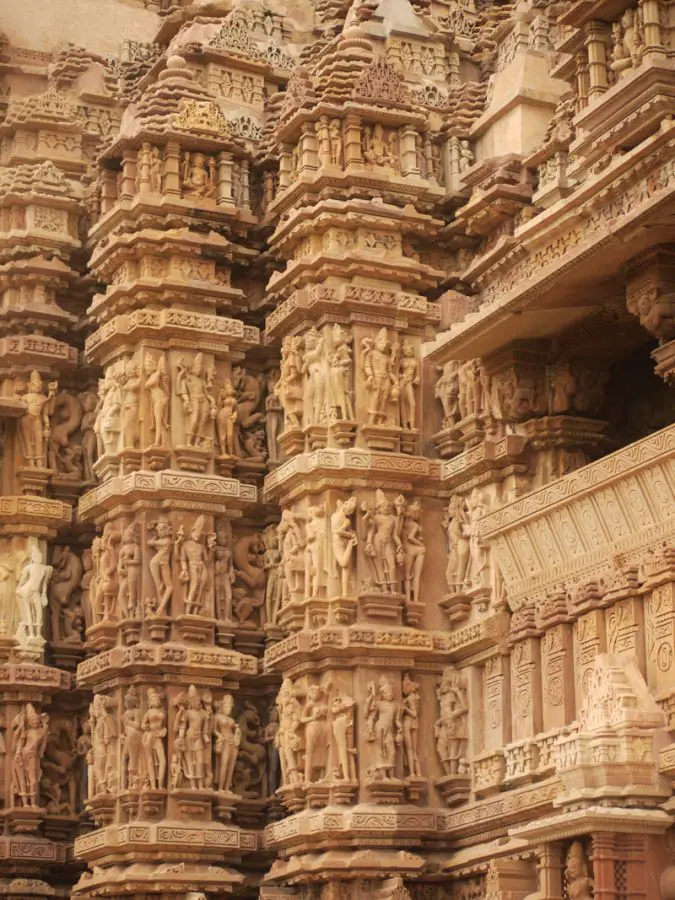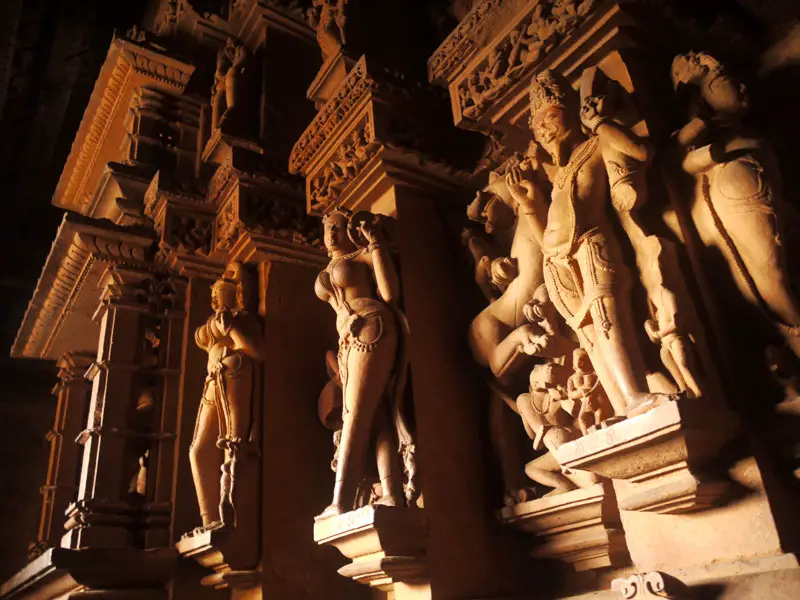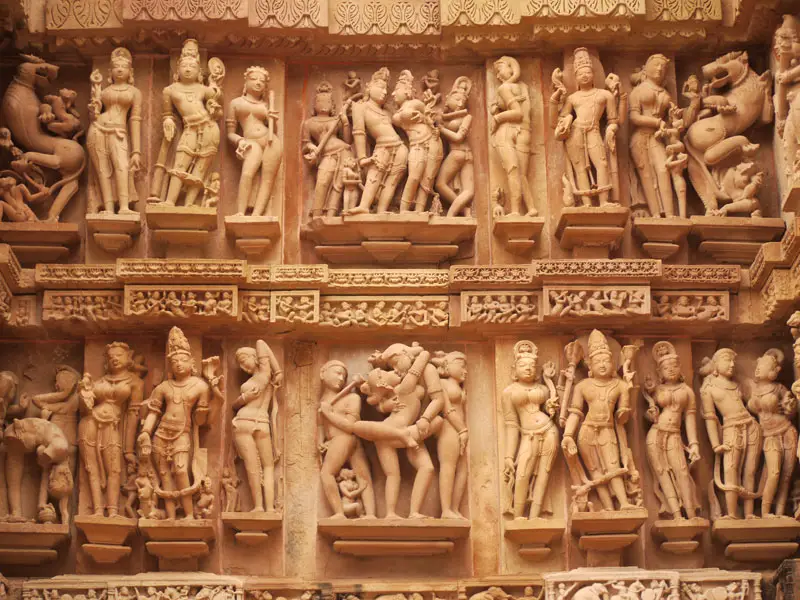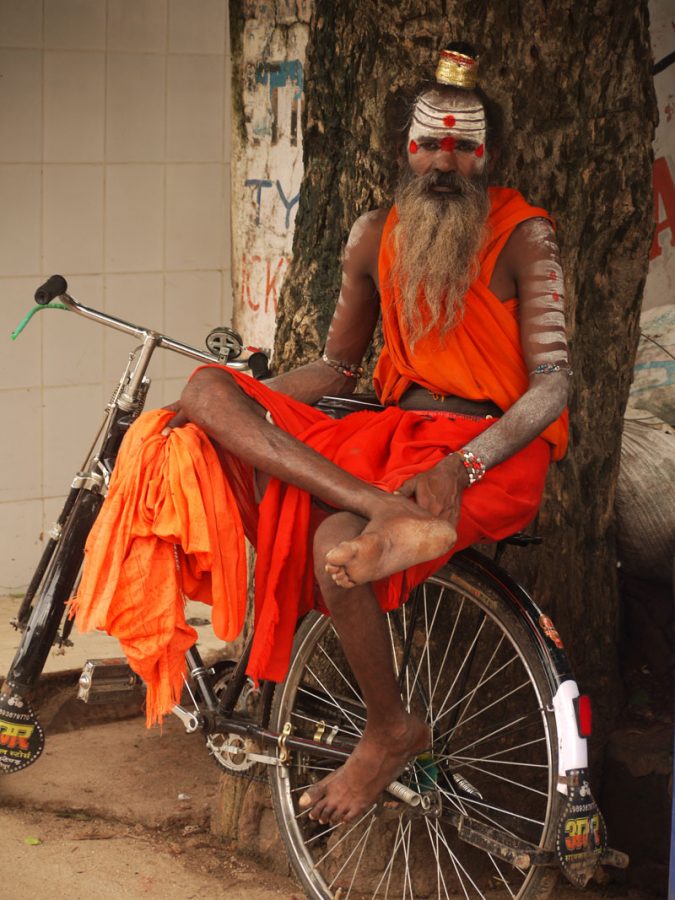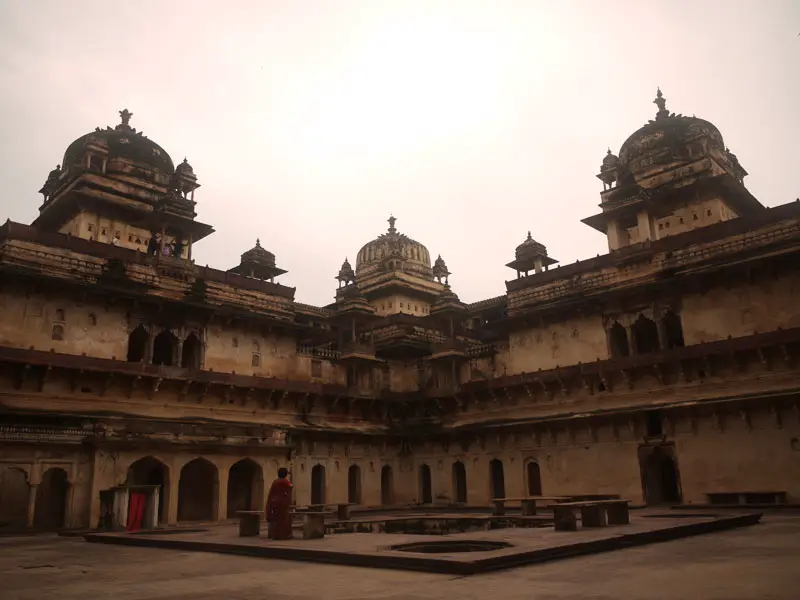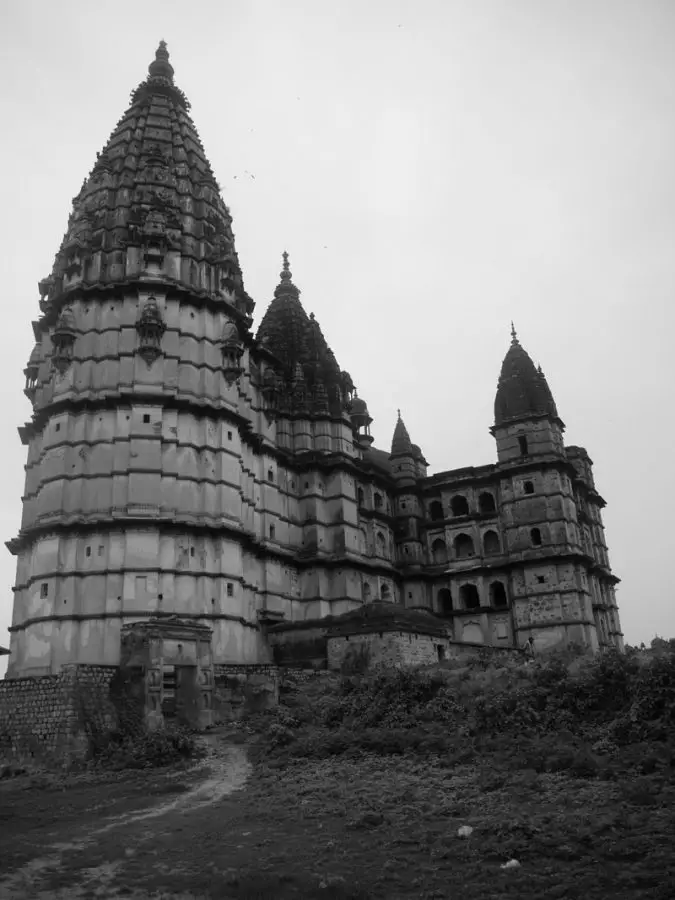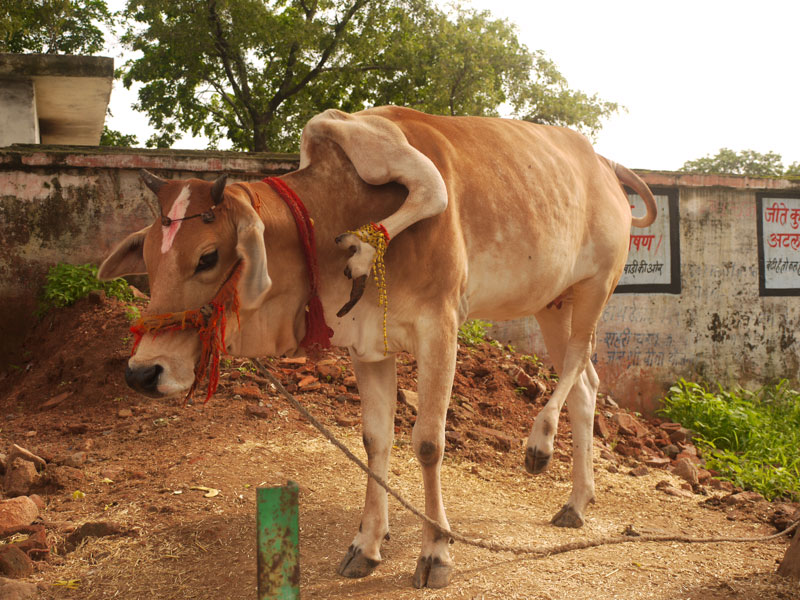Khajuraho is a small town situated in India’s most central state, Madhya Pradesh. While life in Kahajuraho’s old town is a simple existence for the some 19,000 locals, ‘new Khajuraho’ is essentially a single street lined with guest-houses, shops and restaurants which has sprung up in recent years to cater to the huge number of domestic ad foreign tourists which pass through here. At the western end of the street is a group of temples and shrines which showcase some of the most beautiful temples in all of India. The UNESCO World Heritage site is contained within a gated compound and hosts eleven different temples and shrines built by the Chandela Dynasty between AD 950 and AD 1050. Each of the structures is a testament in itself to Indo-Aryan architecture and had it not been for Khajuraho’s isolated location it is likely that the temples would have been destroyed by Muslim invaders centuries ago. Of the original eighty-five structures, only twenty-five sill remain intact today but that number would be lower still had it not been for British officer TS Burt who re-discovered the temples in 1838 and brought them to the attention of the world, saving them from the encroaching jungle and almost certain ruin.
Looking at the temple complex from the road outside it is hard to imagine how people could have created such incredible buildings with such limited technology and resources. The temples rise up from the ground like small mountains, with an initial lower wall which turns to a step-like pattern eventually brought together by a series of beautifully constructed spires which seems to represent the God’s Himalayan mountain home cutting into the sky. From the ground to the peak every last inch of the temple is carved and sculpted with figures. Each and every carving and sculpture is brought to life as they appear to be emerging from the rock as individual three-dimensional entities. The heads, legs and arms of every figure almost reach out to you as you pass by and the bands of carvings around the lower tiers of the temples tell stories of the times, depicting battle scenes, family occasions and religious legends and tales.
As your eye is taken further up the temple walls you reach the base of the sikharas (temple roof-tops) which do nothing but overwhelm as you try to make sense of the enormous amount of incredible artwork staring back down at you. Kandariya-Mahadev, the largest temple in Khajuraho is just over thirty meters tall and has a staggering 872 gymnast-like figures, each standing one meter in height. The rooftop here is probably the most impressive of all, consisting of eighty-four spires, each decorated with beautiful ornate stone-work, some of the finest in India.
There are thousands of fabulous temples throughout India with intricate carvings and ornate artwork but it is a certain recurring theme which sets Khajuraho apart. Around the outside of the temples are bands of carvings which depict gods and goddesses, animals, mythological creatures and scenes from battles. Intertwined amongst these carvings are scantily clad women and men portrayed in the most bizarre sexual positions. Erotic carvings line the walls both inside and outside the temples and show couples embracing each other in impossible ways and it is this eroticism that has brought Khajuraho’s temples fame. However, the action isn’t limited to just couples as threesomes, foursomes and nine person orgys are prominent along the temple’s sandstone walls. The sculptor’s who designed and worked on the temples of Khajuraho were certainly very adventurous and imaginative people and this is made clear when strolling around the grounds admiring some of the temples more unusual, erotic carvings.
Some of the most famous scenes are carved on the walls of the amazing Lakshama temple where after passing the carving of nine people intertwined in every conceivable way, you come to a slightly more disturbing carving of a man getting extra friendly with a horse! It must have been a shock to the people of the time too as there in the background is a figure peeking through their fingers watching on, understandably horrified. Another of the temple’s stand-out carvings is the famous handstand position where an adventurous couple are getting busy in a less-traditional way than most. Throughout the temple’s walls women are depicted in assuming poses wearing wet saris which cling to their bodies, highlighting their curves. Even though it is predominantly these x-rated carvings which have given Khajurho’s temples notoriety the world over, it’s not all sex-orientatd. In fact, each of the temples are dedicated to various Hindu Gods, including Shiva, Vishnu, Parvati and even a shrine to Nandi, Shiva’s bull-vehichle. This was a place of worship and remains that way today as many of the Indian visitors treat the temple in the same reverent manner as they would any other Hindu temples in India. It is also an interesting design feature that most of the more provocative artwork is located away from the temple’s centre sanctum where the statues of the Hindu Deities are, this is a clearly done as a sign of respect to the Hindu Gods.
After spending a few days in Khajuraho seeing the temples and recovering from a bug we had picked up along the way it was onto the small village of Orchha, approximately 150 kilometers north-west of Khajuraho. The small little village of Orchha was a welcome break from the touristy road which we had been on for the last few weeks, it was definitely more of a local scene here and it was nice to wander around the streets and just get lost in a little town where there were no touts or vendors and where people hadn’t yet learned to see tourists as walking cash machines. Everything in Orchha seemed to happen in it’s own time, the people woke before sunrise and were asleep not long after sunset.
The market in the centre of town, outside the pink and yellow Ram Raja Temple, was a hive of activity with people selling fruit, vegetables, coloured powders and traditional Indian sweets. Women wore bright coloured saris, walking through the market area with children in tow and the men hung around their motorbikes and in front of shops chewing paan and chatting the days away. Orchha’s eastern skyline is dominated by two fascinating 17th century palaces; Jehangir Mahal and Raj Mahal. In keeping with the laid-back atmosphere of Orchha the palaces were not repainted or refurbished to any great degree.
Wandering through the ground was a bit of an adventure; negotiating steep, winding staircases and trying to navigate around the labyrinth of corridors was fun. No ropes protected visitors from the sheer drops from the palace roofs and it was nice to go at our own pace and explore the grounds on our terms.Beautiful turquoise tiles still cling to the walls in places, reminding visitors of the beautiful building the palace no doubt once was. Grandeur is something that even now, more than four-hundred years since the palace’s construction, is still apparent in the grounds of the palace. Behind the Jehangir Mahal palace are the huge camel stables where the royal camels were housed and a further five minutes walk takes you to the Khana Hammam, a building where Orchha’s rulers relaxed in Turkish Baths in front of the Raj Praveen Mahal, the former Mughal Gardens, now overgrown and unkept.
West of the palace grounds is the dominating Chaturbhuj Temple which stands towering over the little village. It is built in the same style as the temples of Khajuraho and although it is not as well-preserved, it retains a certain authenticity through the moss on the walls and the weeds living in the cracks in the stone walls. After seeing the temple and strolling around the ground we made our way down towards the Betwa River which flows through Orchha separating the palace grounds and the rest of the village. Every evening people come here to pray and make offerings to the river. The river is strewn with massive boulders and is a beauty in itself. Looking away from Orchha, upriver, a cluster of chattris reminiscent of Khajuraho’s temples dominate the horizon, creating a unique backdrop for the bathing water buffalos, meditating saddhu perched on a rock and the Indian families visiting for the day from nearby Jhansi. We stayed a while chatting to the local visitors as the sun dropped down behind the chattri’s spires as another day drew to a close. Orchha had one final surprise for us as we walked back down to our guest-house, a five-legged cow, tied to a tree, draped in colours as it was apparently worshipped by the locals! Only In India!
It was a very relaxed few days just enjoying laid-back village life and taking in the rough and ready sights of untouristy Orchha and we knew we should relish it as our next stop would no doubt be considerably busier, the jewel of India, the Taj Mahal.

Brian is a travel writer, photographer, blogger, travel addict and adventure-junkie. Being outdoors, getting off the beaten track and outside his comfort zone is what makes him tick. Brian’s the dreamer in the relationship; when he’s not travelling, he’s dreaming about it! Keeping fit, cooking, music and red wine take up the rest of his time.
Sign up for our free travel photography Ebook "Faces of Nepal" and you'll also receive our monthly newsletter.

